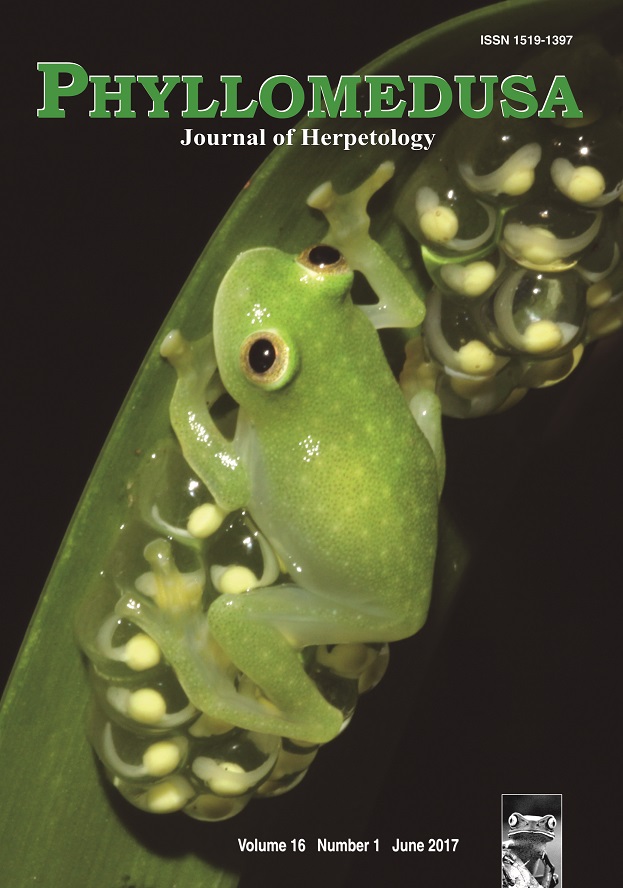Natural history of the critically endangered salamander Ambystoma leorae (Caudata: Ambystomatidae) from the Río Tonatzin, Mexico
DOI:
https://doi.org/10.11606/issn.2316-9079.v16i1p3-11Keywords:
adults, aquatic vegetation, eggs, juveniles, sexual dimorphism, substrate, water speedAbstract
In Mexico, many species of Ambystoma are endangered, but unfortunately little is known about their natural history and ecology. We report on aspects of the natural history of A. leorae, a critically endangered endemic salamander, from the Río Tonatzin, State of México, Mexico. We observed egg masses, which were attached to vegetation, from April to June, with a mean of 7.28 eggs per egg mass. Larval A. leorae were found in sections of the Río Tonatzin with muddy bottoms and submerged aquatic vegetation. We observed adult and juvenile salamanders throughout the year except September, but with a peak from May to July. The use of sites along the Río Tonatzin by adult and juvenile A. leorae was driven primarily by vegetation type and substrate type of the site, with mud or sand substrate with grass roots and submerged aquatic vegetation being the most used site types. We found no evidence of sexual dimorphism in A. leorae. Our results suggest that adult and juvenile A. leorae use a variety of stream sites, although larvae appear to be more limited in their use of stream sites. These observations indicate that to maintain this population of A. leorae, the general conditions existing in the Río Tonatzin should be protected, especially the sections with muddy bottoms and aquatic vegetation where larvae, juveniles, and adults are foundDownloads
Download data is not yet available.
Downloads
Published
2017-06-28
Issue
Section
Articles
License
All material originally published in Phyllomedusa belongs to Escola Superior de Agricultura Luiz de Queiroz - Universidade de São Paulo. All contents are under a license of Creative Commons BY-NC-ND.How to Cite
Lemos-Espinal, J. A., Smith, G. R., Zamora, A. B. E., WoolrichPiña, G., & Ayala, R. M. (2017). Natural history of the critically endangered salamander Ambystoma leorae (Caudata: Ambystomatidae) from the Río Tonatzin, Mexico. Phyllomedusa: Journal of Herpetology, 16(1), 3-11. https://doi.org/10.11606/issn.2316-9079.v16i1p3-11



 Impact Factor (JCR): 0.600
Impact Factor (JCR): 0.600 CiteScore: 1.0
CiteScore: 1.0